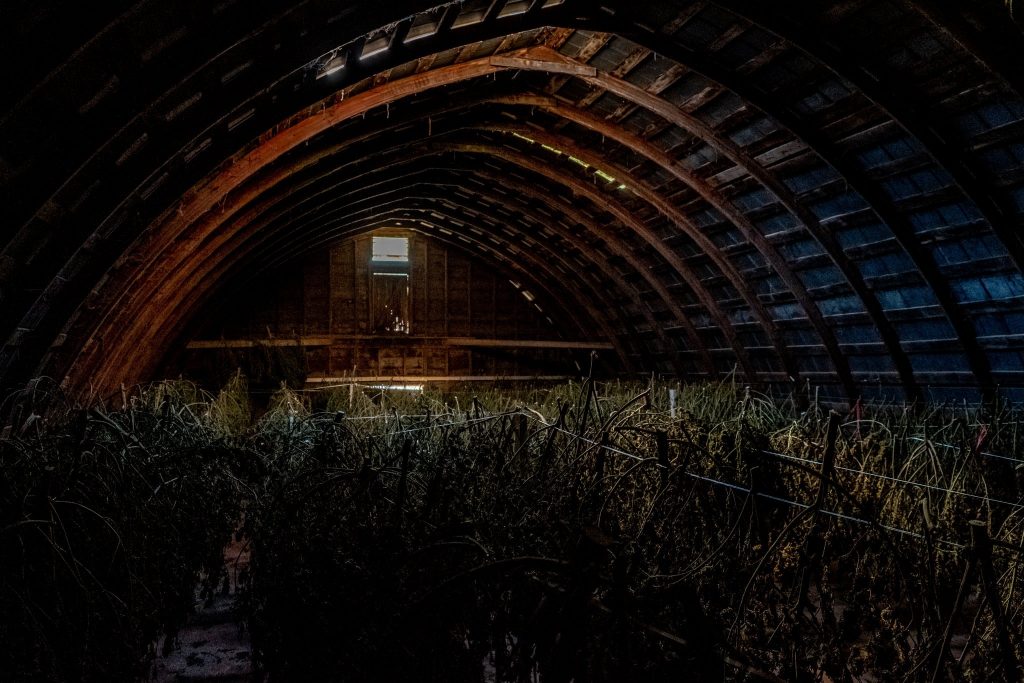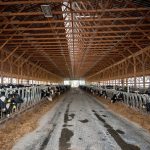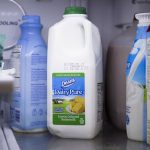
John Lamport limped across the barn that once housed dozens of his cows, gesturing toward the vacant stalls lining the perimeter.
During his career as a dairy farmer, Mr. Lamport had named every cow on his farm, memorizing the markings on their hides. He can still remember which cow stood in which stall.
“Her name was Elf,” he said, pointing to one stall, empty save for a paper coffee cup lying on its side.
A ninth-generation farmer, Mr. Lamport, 47, shut down his dairy business in September, auctioning off a herd of nearly 150 cows in his barnyard in Hobart, a small town in the northern Catskills. His struggle is a familiar one for America’s dairy farmers, who have been battered over the past decade by a nationwide drop in milk consumption, the rise of dairy-free and plant-based alternatives and the trade war with China.
But Mr. Lamport says there is another factor pushing down milk prices and harming farmers: the business practices of Dairy Farmers of America, a farmer-owned cooperative.
The biggest dairy co-op in the United States, with more than 14,000 members from New York to California, D.F.A. was established in 1998 to help farmers like Mr. Lamport market their raw milk to dairy processing companies, which prepare the milk for distribution to retailers.
Over the years, however, the co-op has also invested heavily in milk-processing operations, meaning that it buys some of the milk its own marketing arm sells. Those investments have created a conflict of interest, farmers and the lawyers who represent them say, since milk processors benefit from lower prices, while farmers benefit from higher ones.
Now, the co-op is in talks to acquire Dean Foods, the century-old milk processing company that sought bankruptcy protection in November. No agreement has been reached, but the prospect of D.F.A.’s taking control of Dean Foods, the co-op’s biggest customer, has raised new antitrust concerns.
“They can manipulate the milk price, and they can tell farmers what they’re going to get,” said Mr. Lamport, who now grows hemp for a living, drying the plants in barns where he used to keep his cows. “We have nowhere else to go.”
D.F.A. “ought to be doing one or the other” — market milk for farmers or invest in processing, said Peter Carstensen, a former antitrust lawyer with the Department of Justice who tracks the dairy industry. “The conflict of interest is going to result in harm, and the dairy farmer is going to have no good choices.”
Monica Massey, the executive vice president at D.F.A., said in a statement that it was “ridiculous” to claim that the co-op would suppress milk prices. “Our mission is to bring value to our farm families,” Ms. Massey said. “We do this by striving to pay a competitive price to our members and providing a secure home for their milk.”
D.F.A. invests in manufacturing facilities that “bring additional value to our farmer owners,” she added.
But this is not the first time the co-op has faced allegations of anticompetitive behavior. In 2018, D.F.A., which makes billions of dollars in annual revenue, paid $50 million to settle a long-running class-action lawsuit brought by farmers who claimed the co-op had colluded with Dean Foods to lower milk prices. A group of the plaintiffs dissented from that settlement, filing a separate suit against D.F.A. in federal court in Vermont.
That suit alleges that D.F.A. has engaged in a wide range of anticompetitive practices: making deals with other co-ops not to poach one another’s members, sharing milk-pricing information with those rivals to suppress payments to farmers, and signing restrictive supply contracts with processors like Dean Foods and Farmland that made it impossible for farmers outside the co-op to sell to those companies directly.
Ms. Massey said the allegations were “without merit.” In September, however, the judge in the Vermont case allowed the suit to move forward to a trial. Her decision said the plaintiffs had presented evidence from which a “rational jury could conclude that the D.F.A. management favored growth of its commercial operations and empire building over the interests of its farmer-members.”
In the last few years, the co-op has expanded its business partly by spending hundreds of millions of dollars to acquire milk processors like Guida’s, Cumberland Dairy, Oakhurst and Stremicks.
“When D.F.A. owns the plant, D.F.A. controls which farmers can sell to the plant and D.F.A. sets the price for the raw milk for its plant,” said Joel G. Beckman, a lawyer for the plaintiffs in the Vermont case. “D.F.A.’s acquisition of Dean’s processing plants would be the crown jewel of its empire-building, the death knell for independent farmers struggling to find a place to sell their milk.”
An expert witness for the plaintiffs, the Harvard Law School antitrust specialist Einer Elhauge, calculated that D.F.A.’s business practices have reduced the price of milk by nearly 80 cents per hundred pounds sold, affecting D.F.A. members and nonmembers alike.
In a single month last summer, that price suppression cost Mr. Lamport, a plaintiff in the case, more than $1,500, or 8.5 percent of his total milk check for the pay period, according to his lawyers.
Mr. Lamport said his milk profits began to decline noticeably after he joined D.F.A. in 2017. For decades, he had helped run an independent dairy operation on land farmed by his family since the 1930s, selling milk to the dairy processor Garelick Farms.
In 2001, a subsidiary of D.F.A., the Dairy Marketing Service, took over the transportation of milk from independent dairy farmers to Garelick plants, as part of an agreement the co-op had struck with Garelick’s new owner, Dean Foods. Suddenly, the checks Mr. Lamport’s family received every month were signed by the Dairy Marketing Service.
Then, in 2017, the Dairy Marketing Service informed Mr. Lamport that it would stop picking up his milk: If he wanted to continue selling to Garelick, he would have to join D.F.A. Feeling he had no other option, Mr. Lamport agreed to become a member. Soon, his monthly income decreased, as D.F.A. deducted marketing surcharges and other fees.
“We tried to cut back as much as possible to make ends meet,” Mr. Lamport said. “The milk price wasn’t high enough. We weren’t making money.”
In recent years, the crisis in the dairy industry has become severe enough that it has been blamed for a string of suicides by dairy farmers. One co-op, Agri-Mark, even began enclosing lists of suicide-prevention resources with the checks it sends to farmers twice a month.
At the same time, D.F.A. has earned steady profits. In 2017, the co-op moved into a new $30 million headquarters in Kansas City, Kan., featuring a fitness center, a regulation-size bocce court and a 25-foot milk-themed sculpture in the lobby.
The contrast between the luxurious amenities in Kansas City and the financial struggles of dairy farmers across the country has been “in the minds of a lot of producers,” said Darin Von Ruden, who runs the Wisconsin Farmers Union.
“It’s the whole attitude of economics in the U.S.,” Mr. Von Ruden said. “Management and people at the top continue to get larger pay raises.”
Still, not all farmers believe a merger between Dean Foods and D.F.A. would be harmful. Randy Koller, a longtime dairy farmer in Wisconsin, said the growth of the co-op promised market security. Because he belongs to D.F.A., Mr. Koller said, he never has to wonder, “Is someone going to pick up my milk tomorrow?”
It remains unclear whether D.F.A. will ultimately acquire Dean Foods. Ms. Massey, the vice president at D.F.A., said the co-op was evaluating the company’s assets to “ensure continued markets for our members’ milk” and “minimize overall disruption to the industry.” Since the bankruptcy announcement, the company’s bondholders have raised concerns about the lengthy antitrust investigation that might follow a proposed acquisition by D.F.A.
Whatever happens, Mr. Lamport plans to continue growing hemp on his farm in Hobart.
For years, a serious case of Lyme disease has restricted his mobility, making it difficult for him to spend the entire day working outdoors. In some ways, he said, the daily rhythm of hemp cultivation suits him better than dairy farming: The days are shorter, and the work is less strenuous.
Mr. Lamport still owns a group of calves that he eventually plans to sell. But the loss of his main herd weighs on him. He misses patting the cows and scratching them behind their ears.
“I thought I was going to be a dairy farmer for the rest of my life,” he said. “It’s all I ever knew.”
David Yaffe-Bellany reports on the food industry and general business news. He graduated from Yale University and previously reported in Texas, Ohio and Connecticut. @yaffebellany
























